The Mediterranean countries of Israel, Syria, Bosnia, Morocco, Greece, etc., have such beautiful biodiversity. There are amazing shrubs that originated in those countries that we recommend planting in every garden. Choosing which one best suits your needs might be a bit difficult, but that's why we did the research for you!
Mediterranean Flowering Shrubs
- Lavender
- Rosemary
- Sage
- Lantana
- Mugwort
- Rock Rose
- Mediterranean Spurge
- Shrubby Bindweed
- Daphne Shrub
- Euphorbia
- Shrubby Hare's Ear
Each of these plants has its own set of soil requirements and garden benefits. We encourage you to continue reading as we explain the wonders of each Mediterranean flowering shrub.

1. Lavender
Lavender is known as one of the most beautiful aromatic herbs in this world. Its scent is said to reduce symptoms of anxiety and depression. The scent attracts pollinators and beneficial insects such as hoverflies. Don't be alarmed! Hoverflies may look like yellow jackets, but they're just sweetheart pollinators. Lavender also repels mosquitos!
Growing lavender in your garden is a perfect idea for crafty people who may want to make their own essential oils or salves. In addition, these herbal salves are often used to heal burns and aid bug bites. The oil can be used in homemade cleaning products, too! Lavender has antibacterial properties, which makes it suitable for cleaning.
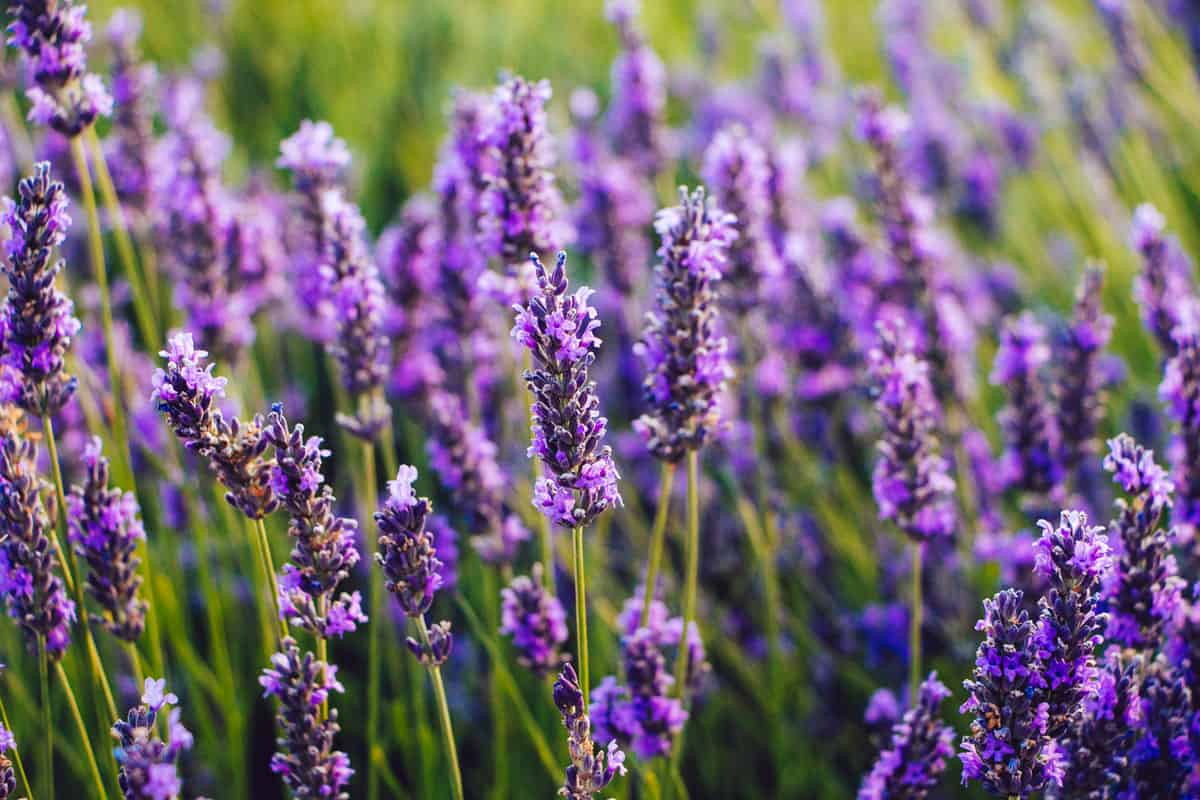
Lastly, lavender has often been used in many foods and drinks. A few common dishes including this herb are roasted lavender potatoes, lavender lemonade, and pressed lavender shortbread cookies.
French Lavender
French lavender has a more pungent fragrance and, as a result, is used more for cleaning and aroma therapy. This plant will absolutely not tolerate harsh winters. Make sure you are planting the lavender best suited for your climate.
Otto Quest Spanish Lavender
Another type of lavender is the Otto Quest Spanish Lavender. While it is edible, it is not the recommended lavender for consumption. It is more commonly used for medicinal purposes. Many folk remedies call for this Spanish lavender, and it is said to relieve headaches and flu symptoms. It is a drought-resistant herb and makes for a great companion plant to rosemary.
2. Rosemary

Rosemary has been used as an ancient symbol of remembrance, which is why it is often seen on graves. Centuries later, scientists discovered that rosemary can be used to prevent cognitive decline in dementia and Alzheimer's patients. We're not sure whether or not it is a pure coincidence that rosemary can enhance memory. It's a fun fact, though!
Growing rosemary can repel mosquitos from the garden. This plant enjoys slightly acidic soil full of humus. To achieve a bushier look, try trimming the edges of the plant to promote growth. We also recommend cooking with rosemary! The herb is rich in carnosol and vitamin E, not to mention it makes food delicious!
3. Sage [Salvia]
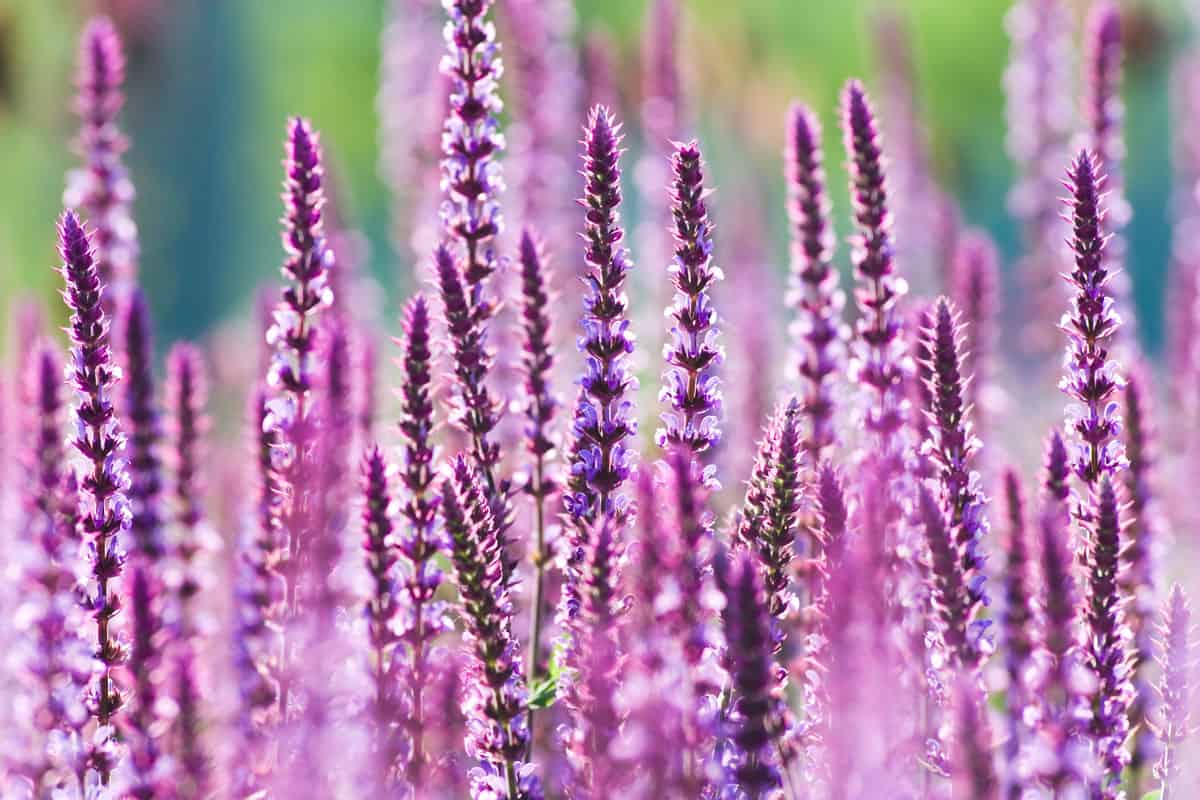
Sage prefers partially alkaline soil and a very good drainage system. This plant needs better drainage than the average crop and will not stand to have moist roots for long. That being said, it is drought tolerant, of course! Sage may grow better if you separate it in a raised bed due to its unique water requirements.
The benefits of growing sage include attracting pollinators, repelling cabbage moths, and it can speed up compost decomposition! Sage is a compost activator, which means it has a lot of good bacteria that can strengthen your compost. Finally, sage is used both medicinally and in culinary arts. Sage is an antiseptic herb that can treat small wounds like a sore throat.
Burning Sage
Burning sage does more than repel mosquitos. This is an ancient practice performed by many indigenous tribes. Many native people burn white sage during life, death, and rebirth celebrations. White sage is a sacred, endangered plant. Non-native people shouldn't use it. Smudging with white sage is a cultural practice used in rituals and prayers. It is considered appropriation to perform similar actions with white sage due to its sacred status.
4. Lantana

Lantana shrubs are pretty low maintenance. They like to live in slightly acidic, well-drained soil and don't require any fertilization. While it is uncommon for these plants to attract disease, any change in the leaf color may warrant a full inspection for pests.
One benefit of this plant is that it has been used to treat symptoms of tuberculosis in Uganda. The extract can also be used as an insecticide for specific plants. The flowers will also produce tiny, dark, edible berries.
5. Mugwort

There is a lot of controversy over the uses of mugwort. Here's what we know.
This shrub loves the full sun with just a bit of afternoon shade. It has relatively small flowers, although it will still attract plenty of pollinators. The plant may be able to aid in indigestion and is sometimes used in anti-itch creams. Unfortunately, there are not enough studies on mugwort anti-itch cream to determine if it benefits the skin. It has also been used to enhance dreaming during sleep.
Mugwort and Menstruation
In the past, mugwort was used to induce abortions. Today, we know that mugwort can stimulate the menstrual cycle when consumed orally [such as in tea] and relieve bloating. Lastly, it is advised not to consume mugwort while pregnant or breastfeeding. There has not been enough research to confirm whether it is safe to drink mugwort tea while breastfeeding.
6. Rock Rose [Cistus]
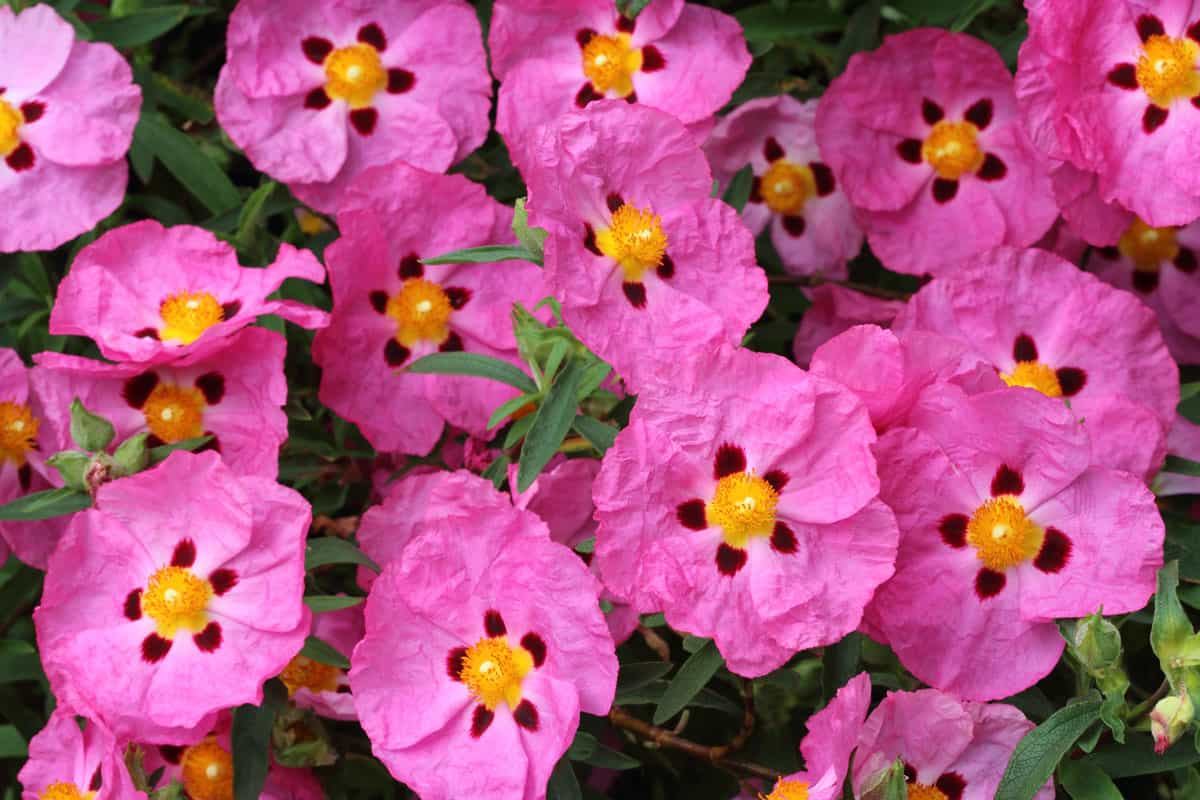
Rock rose shrubs live in full sun - they are entirely drought tolerant and salt resistant. This plant is unique because the flowers will only bloom for a few hours in the summer. New flowers come in almost immediately after, though! There are more than 20 species of cistus flowers, including many hybrids. It is also common for this plant to be used for erosion control.
Pink Rock Rose
This is one variety of rock rose. It can grow 2-4 feet tall and acts well as a ground cover. Pink rock rose can also tolerate high salt levels, making it perfect for coastal gardens.
Crimson Spotted Rock Rose
Considered the most beautiful in the cistus family, this flower is undoubtedly a showstopper. It does not require much water and will grow up to a foot taller than the pink rock rose. It does not tolerate harsh winters below 15℉.
7. Mediterranean Spurge
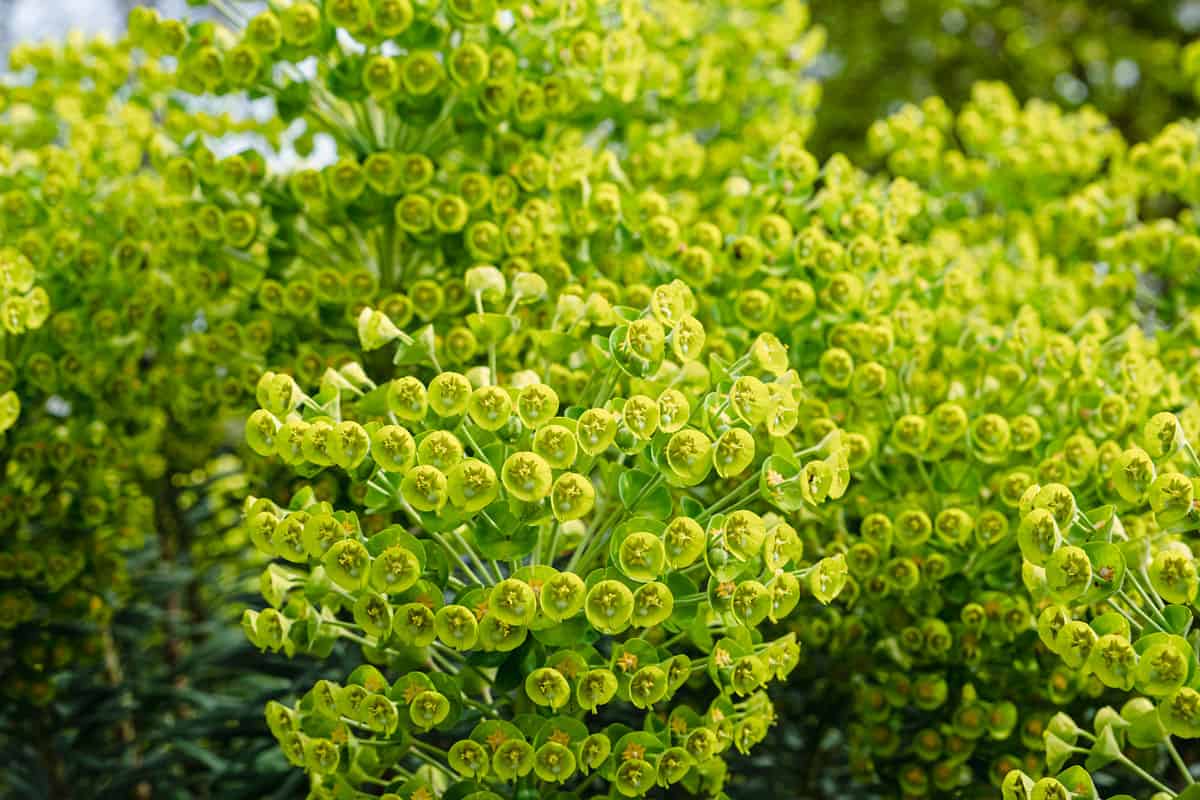
This fast-growing shrub reaches 3-4 feet in height and width. It can work well in soil pH and even adapt to rocky soil and clay. This is not a picky plant! It will attract butterflies and hummingbirds to the garden as well. Be cautious when trimming the spurge; the leaves and stem have a milk substance that can irritate your skin.
View protective gardening gloves on Amazon.
8. Shrubby Bindweed

Yet another stunning shrub that enjoys full sun and is drought tolerant. This plant has flowers that appear to look like white morning glories with a beautiful yellow center. The shrub will only grow 2 feet tall but can spread up to 4 feet across. It also has green leaves with tiny silver hairs, so don't be alarmed when you feel the fuzz. Lastly, the flowers will attract pollinators, especially butterflies.
9. Daphne Shrub
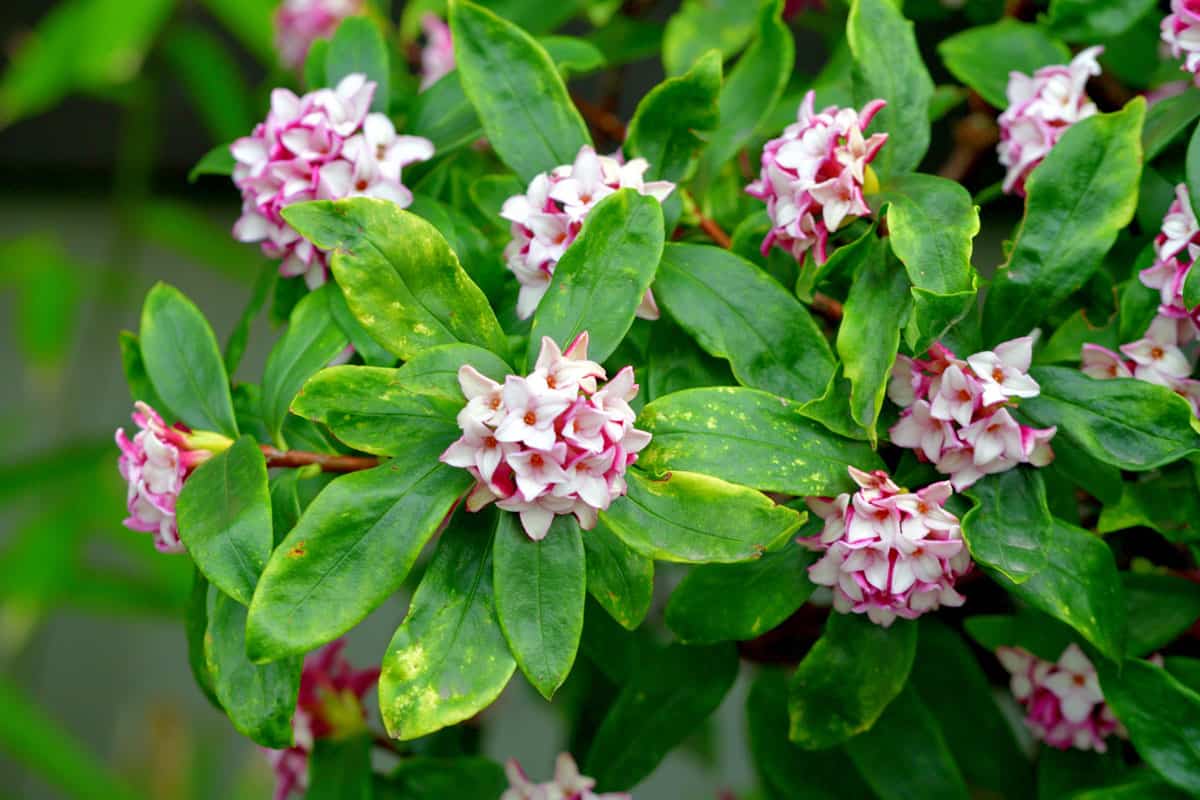
The Daphne Shrub grows much slower than the other plants featured in this post. Some Daphnes won't reach full maturity until they are ten years old! A very important note for this plant is that the berries are toxic. This is not a plant you'll want around toddlers who put everything in their mouths. These are much more difficult to take care of than other shrubs, so maybe pass this one up if you are a new gardener!
10. Crown of Thorns
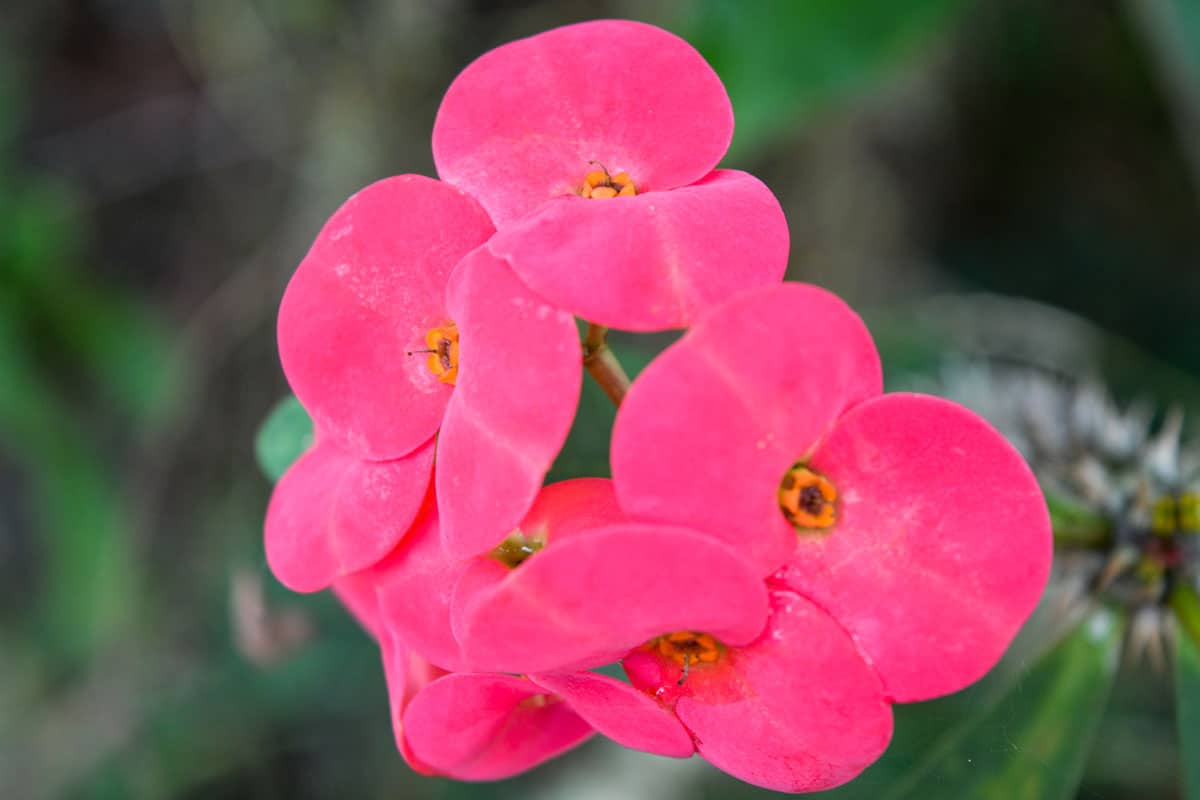
The Crown of Thorns is part of the Euphorbia plant family [the same family the Mediterannean Spurge is in!] Sometimes this plant is referred to as the Christ thorn as well. The flowers will last all year when this plant is fully taken care of. Throughout the last few decades, scientists have successfully created hybrids of this plant that produce larger quantities of flowers.
Since this plant can adapt to low-water routines, it is best to wait until the top inch of soil is completely dry before watering. It will need even less water in winter!
Fun fact - "Crown of Thorns" is also the name of a starfish breed!
11. Shrubby Hare's Ear
The Shrubby Hare's Ear thrives in full sun and produces a delightful scent. It can grow up to 8 feet tall, so be sure you are planting it in a spacious area. It does well on slopes, near river banks, and can grow up against fences. Oh, and not to mention, it can grow in the sand!
The roots of this plant have often been used to treat coughs, fevers, and respiratory infections. Before harvesting roots and directly consuming them, it is advised to contact your doctor.
Concluding Statements
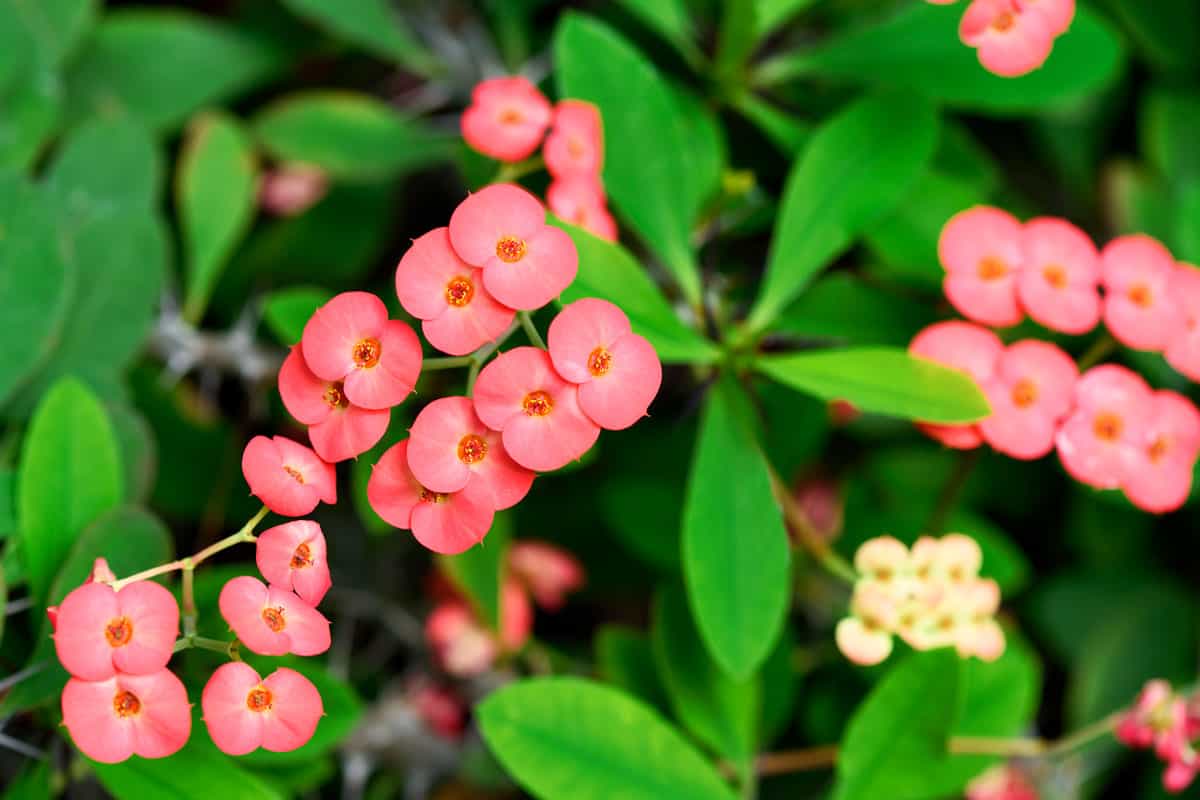
We hope you enjoyed reading about the variety of Mediterranean flowering shrubs as much as we loved researching them. Remember to wear gloves while gardening and be kind to bees! Find more posts about shrubs on our blog down below.
11 Beautiful Climbing Flowering Shrubs And Vines
15 Shrubs For Wet Clay Soil That Will Look Great In Your Garden


